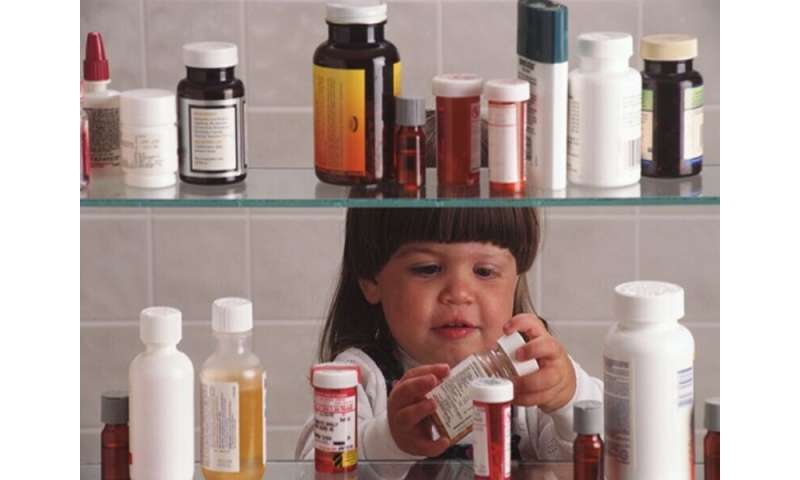Parents, grandparents to blame for many child drug poisonings, CDC warns


(HealthDay)—If you are sometimes less than careful with your prescription medications and have young kids at home, a new study shows how easily tragedies can occur.
Researchers found that young children getting into medicines leads to about 400,000 poison center calls and 50,000 emergency department visits in the United States each year.
In more than half of these cases, medications have been removed from child-resistant containers by an adult, according to the analysis of calls to five poison control centers.
“It may be time to place greater emphasis on encouraging adults to keep medicines in containers with child-resistant features,” said study senior author Dr. Daniel Budnitz, from the division of healthcare quality promotion at the U.S. Centers for Disease Control and Prevention.
“There is an opportunity here for innovative medication container options that promote adult adherence and provide portability and convenience, while maintaining child safety,” he said in a CDC news release.
There were four common situations in which young children got into prescription pills after the pills were taken from original containers:
- Pills were put into pill organizers that aren’t child-resistant.
- Pills were put into baggies or other non-child-resistant small containers that adults carried with them.
- Pills were left out on countertops or on a bedside table for someone to take later.
- Pills were spilled or dropped and some were missed when they were picked up.
Attention-deficit/hyperactivity disorder drugs (49%) and opioid painkillers (43%) were the medications most often not secured in any container when found by young children, the researchers found.
Diabetes drugs (34%) and heart medicines (31%) were the medications most often placed in alternate containers, such as pill organizers or baggies.
Nonprescription medications were most often taken by young children from the original containers. Child-resistant packaging is not required for many of these medications because they have a low potential for toxicity, the study authors noted.
In most cases, children got into their parents’ pills. However, for some prescription medications that can pose a serious risk to young children in small amounts (such as diabetes or heart medications), over half belonged to grandparents, the findings showed.
That highlights the need to remind grandparents, as well as parents, about the importance of keeping medications out of the reach and sight of children, according to the report published Feb. 12 in The Journal of Pediatrics.
Medications should be kept in the original child-resistant packaging, the CDC says. If you must remove pills from their original containers: use a child-resistant container; securely re-close the container after every use; and put the container out of a child’s reach and sight immediately after every use.
Keep purses, other bags or pockets with medicines in them up and away from young children. If pills are spilled, double-check to make sure that all pills are picked up.
Source: Read Full Article